AI Workflow Automation Guide: Benefits, Tools & Use Cases
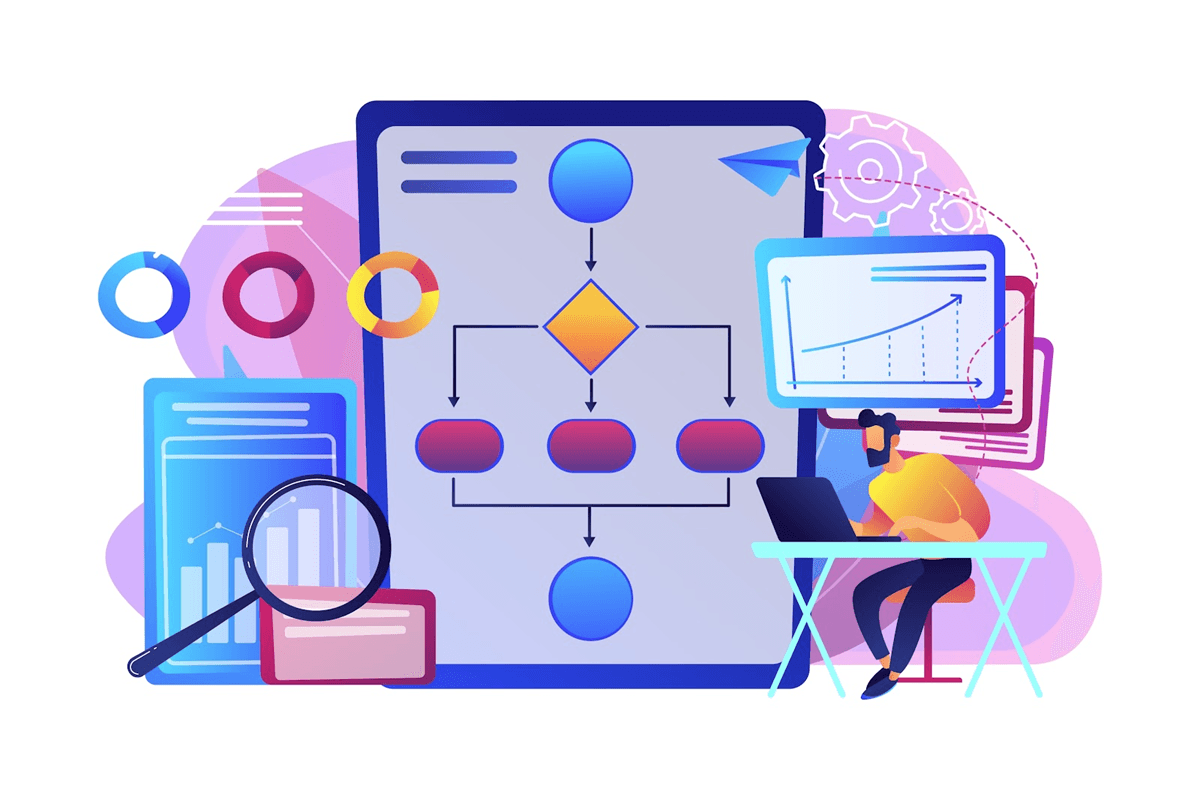
Work piles up fast: emails, reports, and updates. It never ends.
Basic workflow automation tools speed things up, but only follow fixed rules. AI workflow automation, on the other hand, cuts repetitive tasks and manages more complex processes like scanning documents, sorting emails, or writing simple content.
Add in AI agents, machine learning, and natural language processing, and your team finally gets a system that adapts.
In this guide, you’ll see the benefits of AI, the top AI workflow automation software, and real-life use cases.
What Is AI Workflow Automation?
AI workflow automation is about using artificial intelligence to run work you’d normally hand off to people. It doesn’t stick to fixed, rule-based tasks. That’s a big difference from traditional systems that only follow a script.
With AI, you can go further. An AI model can spot patterns in data, adjust to new input, and move the work forward without human intervention. That’s how companies handle complex processes such as:
- Fraud checks
- Customer sentiment analysis
- Invoice processing in minutes
The results show up in everyday work, too. An AI chatbot even replies to customers, routes issues to the right person, or closes tickets on its own. Automation also covers smaller tasks like scheduling meetings or syncing records.
How Does AI Workflow Automation Work?
So how does it all come together? AI workflow automation works by merging various moving parts into a system that can run tasks from start to finish. You get:
AI Agents and Orchestration
In any AI workflow, the orchestrator sits at the center. It acts like a central control room, directing data, assigning tasks, and making sure each step fits into the bigger process. With it, agents move as one system.
The AI agents are the workers. Each agent focuses on specific tasks, such as:
- Routing emails
- Generating replies
- Updating records
Reflex agents follow simple triggers, learning agents improve over time, and goal-based agents plan out a path to hit an objective.
In larger setups, multiple agents operate on AI algorithms designed to reason through data, make decisions, and adjust when conditions change.
With Activepieces, AI agents run on a “Perceive, Think, Act” cycle. These agents gather information from inputs like emails or APIs, process it with advanced AI models, and then act by running tasks across your connected tools.
Sign up for free and test Activepieces yourself.
Integrations
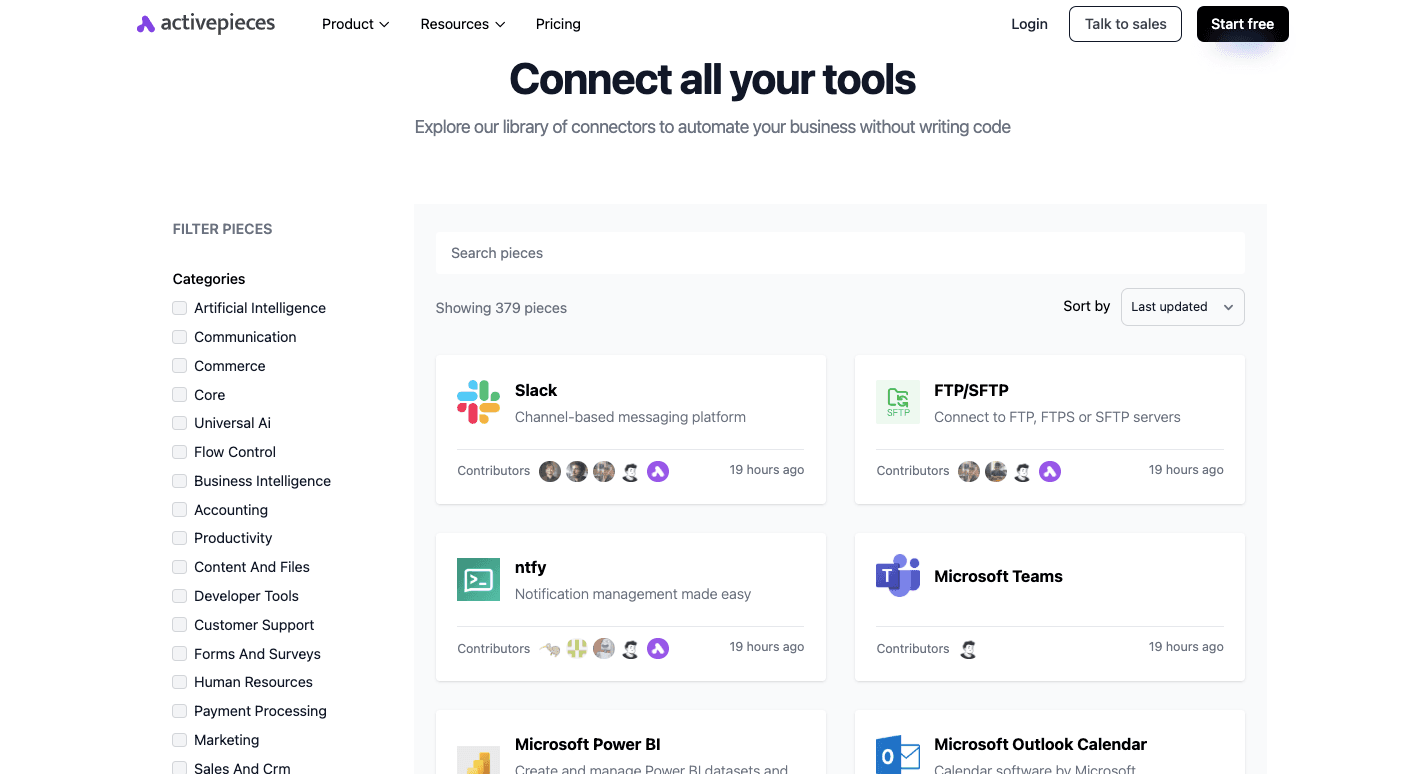
Automations can only do so much if they live in isolation. Integrations connect the dots between different apps and systems so information flows where it’s needed. Without them, you risk duplicate work, silos, and delays.
There are several ways to link tools. For instance, pre-built connectors let you hook into popular apps with no code. APIs allow deeper real-time data sharing. Webhooks enable instant event-driven responses. For more complex setups, iPaaS (integration platform as a service) solutions provide a central hub for managing multiple connections.
Activepieces makes this simple with 379 pre-built integrations, called “pieces,” that cover CRM, ERP, marketing automation, finance, and AI platforms. Because it’s open source, the community continuously adds new pieces. Developers can build custom ones in TypeScript, while business users get no-code access to ready-made flows.
Machine Learning Algorithm and Natural Language Processing for Context-Based Decisions
Machine learning gives workflows the ability to learn from past data. It spots patterns and predicts outcomes. In finance, for instance, it can catch unusual transactions before money moves. Continuous feedback makes the system more accurate with every cycle.
Natural language processing (NLP) allows AI to read and understand human language. It picks up on things like tone, intent, and meaning.
NLP also supports document review, entity recognition, and summarization, which are essential in industries like healthcare, law, and customer service.
Robotic Process Automation + AI Enhancements
Robotic process automation (RPA) fills out forms, copies data, and interacts with software in predictable ways. When AI, the bots can gather information, while AI layers interpret unstructured files, analyze tone, or decide the next move.
Take invoice processing as an example. An RPA bot can capture a PDF, while AI extracts the amounts, dates, and vendor names. Together, these two complete the task without a person stepping in.
Key Benefits of AI Workflow Automation
AI workflow automation takes over routine and complex tasks, which leaves people with more time for creative and strategic work. Loan approvals that once took days now finish in hours, and support tickets that piled up are resolved in minutes.
Key advantages include:
- Automating tasks like data entry, document review, and updates.
- Lowering errors and improving accuracy across departments.
- Reducing the need for extra staff during peak periods.
- Using predictive AI tools to avoid downtime and delays.
Wiser decisions follow when AI turns past data into clear guidance. Your teams gain customer insights, while marketing gets advanced analytics to adjust campaigns. Systems also support optimization for monitoring quality control. That makes your advanced workflows more dependable as demand grows.
Top 3 AI Automation Tools in 2025
More companies now rely on AI solutions to save time and improve results, such as:
1. Activepieces
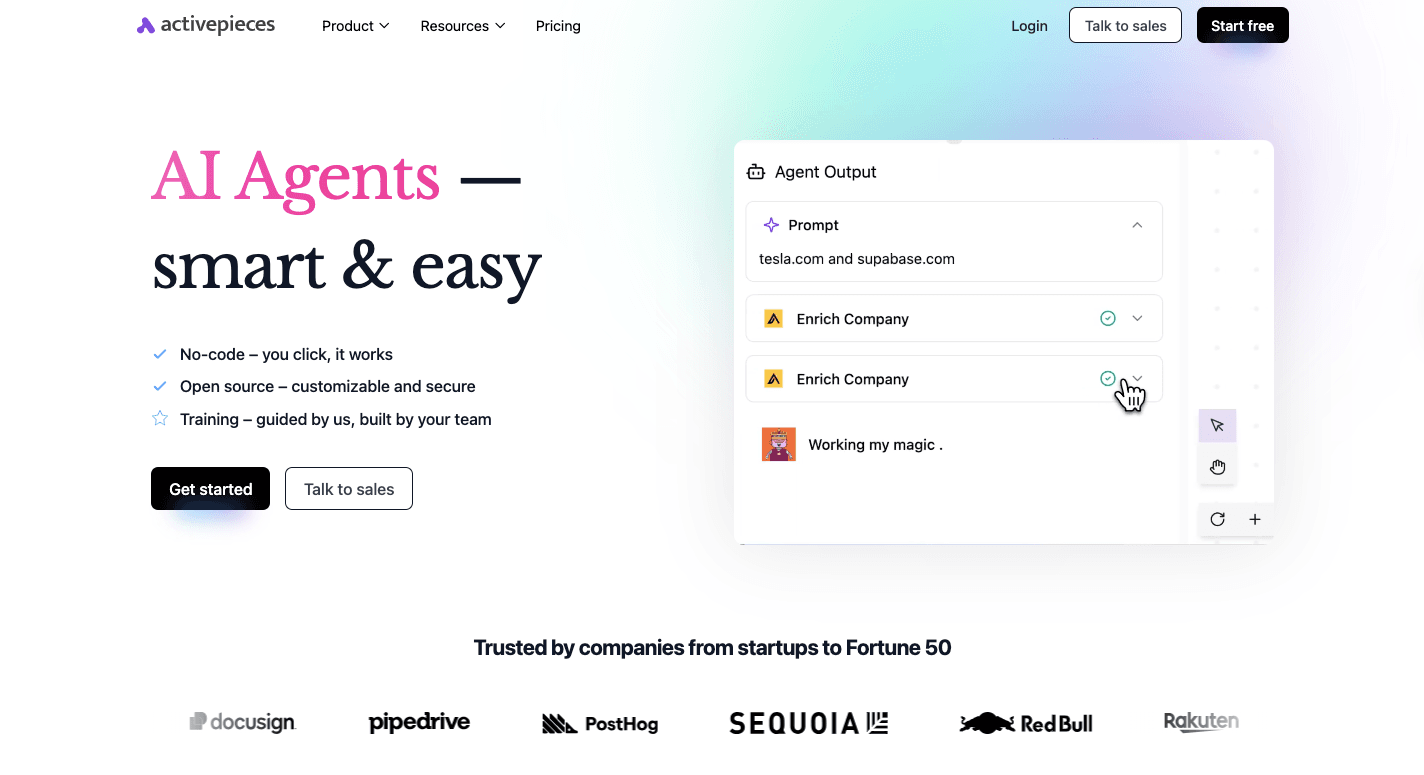
While traditional automation tools like Zapier and Make can feel either too simple or too restrictive, Activepieces delivers the balance: simple for non-technical users, and customizable for developers who want to go deeper.
The platform runs on pieces, which are ready-made integrations. There are already 379, but the community adds new ones every week, so the library grows without waiting for vendor updates.
Activepieces also works smoothly with existing systems. You can run it in the cloud for convenience or self-host it if you want maximum control over data. For a startup, it’s the easiest way to automate day-to-day work without breaking the budget. Meanwhile, enterprises get security and customization in a single platform.
Key Features
- No-code builder - Drag, drop, and launch flows without writing code.
- AI-ready flows - Use native AI integrations or build custom AI agents with the SDK.
- TypeScript customization - Extend the platform with custom pieces built by your dev team.
- Copilot builder - Get AI-guided help while building flows inside the editor.
- Human-in-the-loop - Add approvals or checkpoints when workflows need review.
- Input triggers - Collect data directly from chat or forms built into your flows.
- Security-focused - Self-host or keep workflows network-gapped to protect data.
- Community-driven growth - New pieces appear constantly thanks to developer contributions.
Integrations
Activepieces connects with 379 apps and services. These pieces cover productivity tools like:
- Google Sheets
- Microsoft Excel
- Slack
- Discord
Marketing teams plug into ActiveCampaign and WordPress. Customer support flows connect with Zoho Desk and Microsoft Dynamics, while finance teams can run automations with Zoho Books and Zoho Invoice.
More than half of the integrations come from the community, so new apps appear faster than with closed platforms. Activepieces also takes an AI-first approach.
It connects natively to OpenAI, Google AI Studio, and ElevenLabs, and it supports model context protocols so AI agents can act across any piece in your stack. That means your automations even make intelligent decisions along the way.
Pricing
Activepieces’ free cloud plan gives 1,000 tasks, AI steps, and two flows to help small teams get started. The Plus plan at 25 dollars a month adds unlimited tasks, more flows, and AI credits.
Business at 150 dollars a month scales up with 50 flows, multiple projects, API access, and more users. Enterprise plans are custom and include dedicated support.
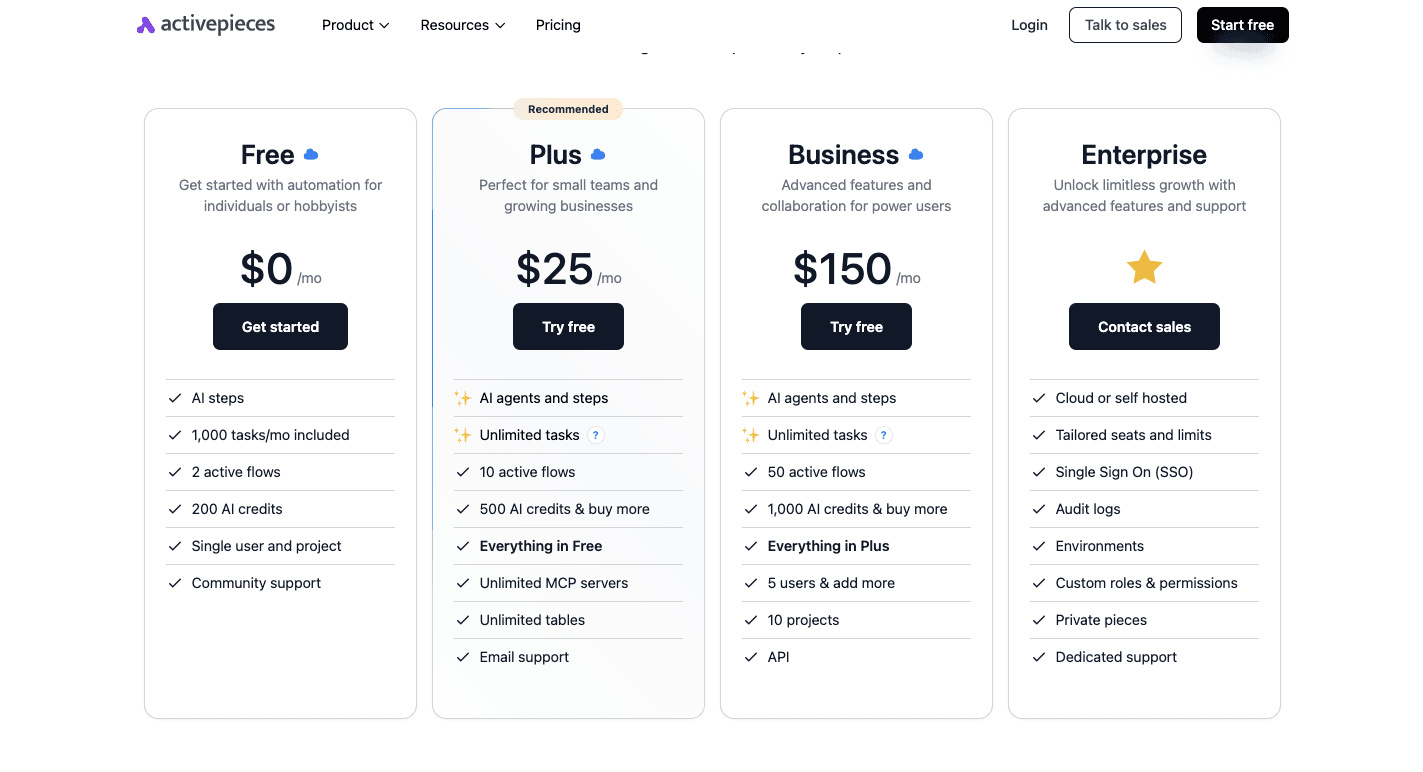
Compared to Zapier or Make, where costs jump as your usage grows, Activepieces keeps pricing steady. You know exactly what you’ll pay monthly, no matter how many automations you run.
2. Lindy
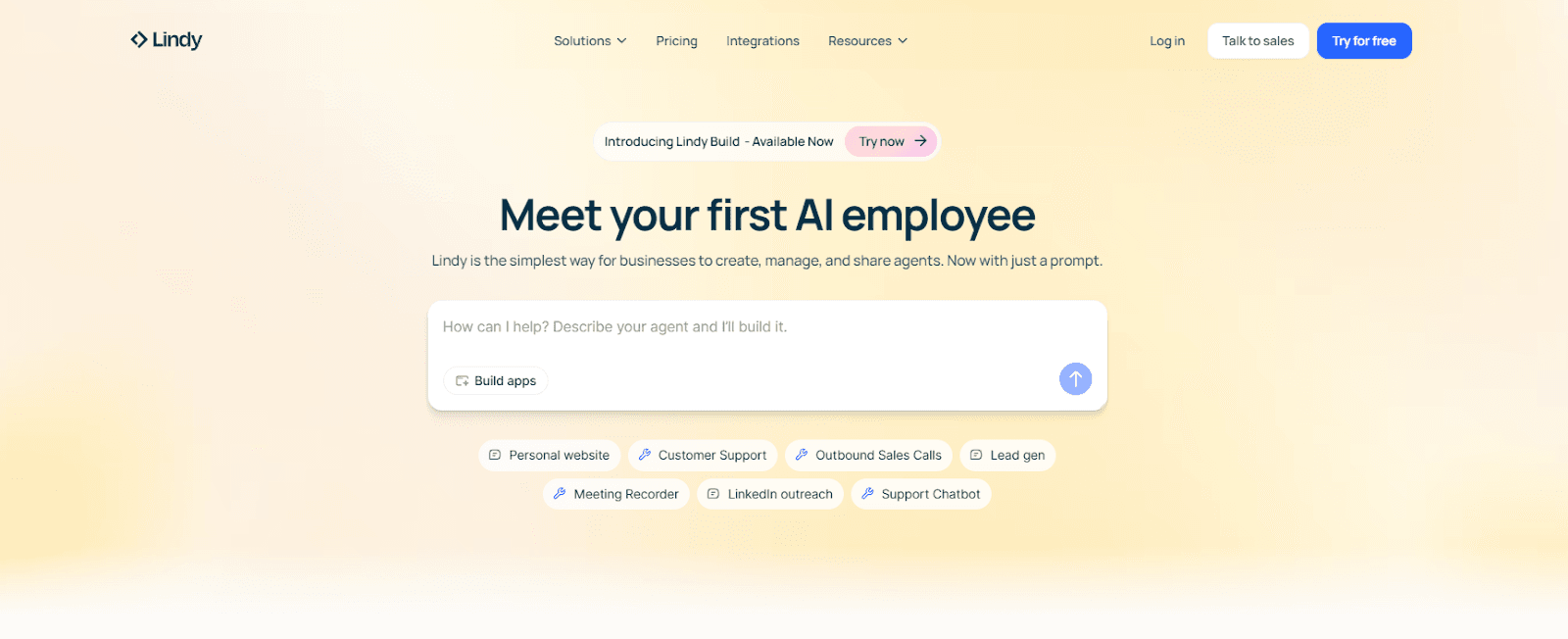
Lindy is a no-code platform that creates AI agents (Lindies) that automate everyday work. You explain the tasks in plain English, and the system builds agents that carry those.
These agents act like AI assistants that can manage emails, organize schedules, update records, or even join meetings to generate summaries. By design, the platform makes business process automation more handy, especially when you don’t have developers on staff.
Customer service teams also benefit from automating tasks through AI agents that read support tickets and provide quick replies. Lindy works across multiple workflows, including email management, transcription, and voice-based phone support.
Key Features
- Pre-built templates - A marketplace offers ready-made setups for sales, customer support, and meeting management.
- Natural language setup - Configure rules and responses in everyday language so your non-technical staff can use them.
- Triggers, conditions, and actions - Define when agents activate, the rules they follow, and the actions they complete.
- Sales and support functions - Agents qualify leads, update CRM records, and serve as chatbots for customer inquiries.
- Integration reach - Works with apps including Google Workspace, Slack, Salesforce, and Notion.
- Security compliance - Meets enterprise standards like SOC 2 and HIPAA for handling sensitive data.
Pros
- Functions well for email, scheduling, and customer support.
- Handles security and compliance.
- Offers pre-built templates to get started quickly.
Cons
- Performance may be inconsistent.
- Limited support for complex tasks.
- Voice AI functions well in US settings.
Pricing
Lindy offers a free plan with 400 credits and a capped knowledge base. The Pro plan costs $49.99 per month and includes 5,000 credits with expanded capacity.
Meanwhile, the Business plan is $199.99 per month and comes with 20,000 credits plus a dedicated solutions engineer.
The prices for each plan increase based on the amount of monthly credits.
3. IBM Robotic Process Automation
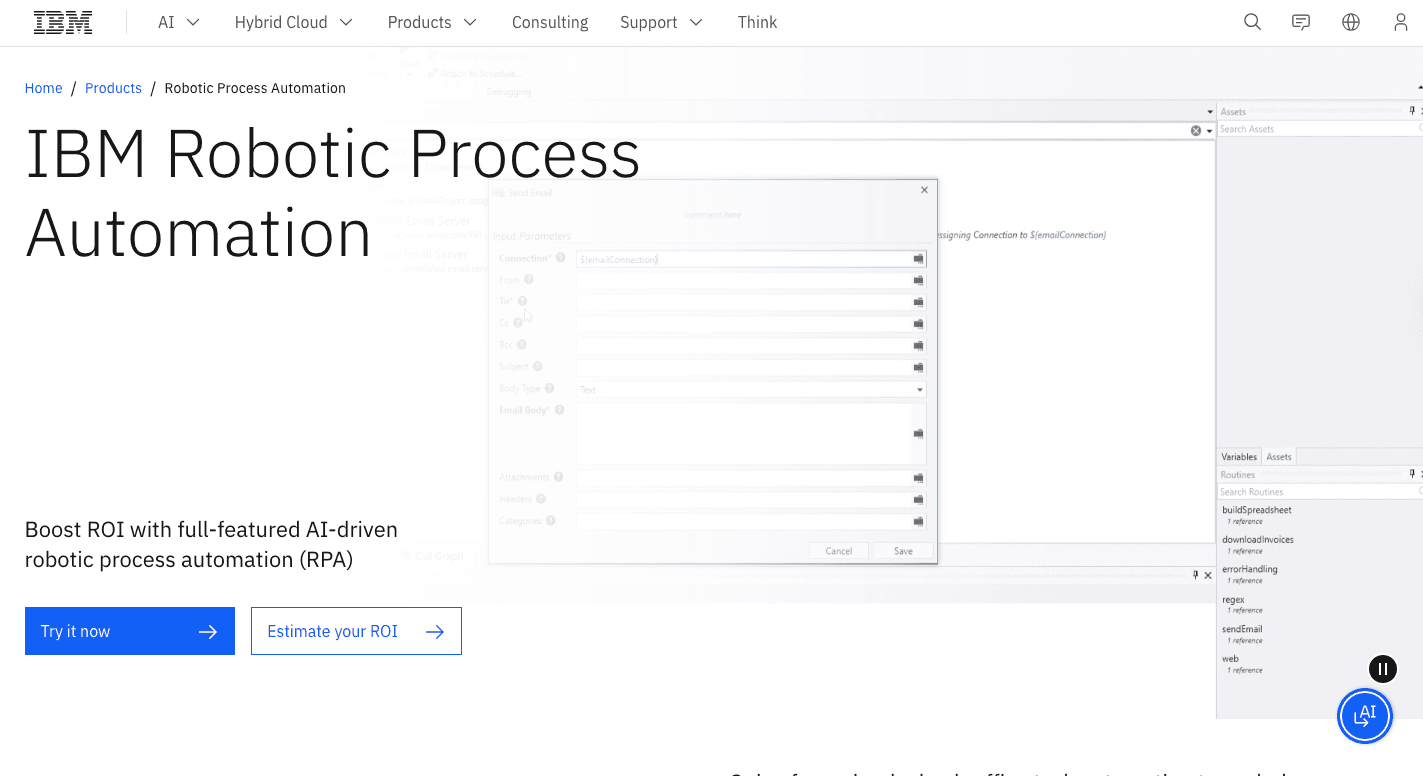
IBM Robotic Process Automation, or IBM RPA, automates high-volume tasks while adding intelligence to workflows. It uses bots to handle repetitive actions, but combines them with AI so the system can take on more complex work.
Companies choose it for finance, insurance, healthcare, and retail, where automation saves time and reduces mistakes. From transaction handling to claims review, IBM RPA takes on both routine and advanced jobs.
The platform’s hybrid architecture supports deployment on-premises, in the cloud, or in containers. Over time, these automations improve data quality by reducing human errors and maintaining consistency across records.
Key Features
- Low-code authoring - Build bots with a drag-and-drop interface or scripting for advanced logic.
- Workflow recording - Capture user actions and turn them into repeatable processes.
- Pre-built templates - Access a library of commands for quick bot creation.
- AI and ML integration - Use machine learning and NLP to handle unstructured data.
- Optical character recognition - Extract data from scanned documents and PDFs.
- Chatbots - Combine chat with automation for customer service tasks.
- Operational insights - Monitor performance with dashboards and analytics.
Pros
- Handles both simple and complex workflows.
- Integrates AI for document review and natural language input.
- Supports strict compliance and audit needs.
Cons
- Licensing is costly for many businesses.
- The setup and learning curve can be steep.
- Limited to certain languages and legacy apps.
Pricing
IBM RPA uses a capacity-based pricing model. Licenses can be shared across multiple systems as long as the number of active bots stays within the agreement.
Use Cases of AI Workflow Automation: See Activepieces in Action
Every day work often includes specific business operations that eat up time. AI workflow tools could benefit you here by turning them into automated business processes that save effort and cut mistakes.
Activepieces proves to be the perfect automation software partner by making these flows simple to design and quick to run.
Automatic Scraping of Company Information Before a Call
Researching prospects eats up hours that could be spent on selling. Activepieces handles this automatically by pulling company data the moment a lead enters your CRM or a call is scheduled.
The flow captures firmographics like size, revenue, and industry, along with technographics that show which tools the business already uses.
Recent events such as funding announcements, product launches, or leadership changes are also added to the record. With this context, your reps better know the prospect’s needs.
Lead Appointment Qualification
Sales teams often lose time trying to decide which prospect deserves attention first. Activepieces automates the process by assigning scores based on:ž
- Clicks
- Downloads
- Job titles
- Company size
Other than that, it enriches records with firmographics and technographics from external sources, so reps see a complete profile before making contact. When a lead visits your pricing page or downloads a case study, the system sends alerts in real time.
Human resources teams use the same approach when filtering applicants to prove how AI systems extend beyond sales.
Email Routing
Overflowing inboxes slow down teams and frustrate customers. Activepieces fixes the issue by routing emails based on rules or AI-driven automation content analysis. Sales questions reach the right rep, support tickets go straight into the help desk queue, and urgent cases are flagged for fast attention.
High-value clients receive special handling, too. The flow can notify relevant stakeholders automatically whenever key accounts send a message, so no one is left out of the loop.
Internal operations benefit as well since addresses like “hr@” or “finance@” are routed to the correct team without confusion. Faster responses raise customer satisfaction and reduce the load of routine tasks on employees who would otherwise spend hours sorting through messages.
Email Autoresponder
Answering emails one by one is not practical when customer inquiries arrive around the clock. Activepieces sets up autoresponders that send immediate answers.
The flow can also:
- Confirm receipt of support requests.
- Share estimated response times.
- Escalate urgent cases to the right agent.
For marketing teams, autoresponders guide prospects through nurturing campaigns without manual effort.
By responding quickly, businesses keep customers engaged while freeing staff from repetitive replies. It creates consistent communication and improves service without adding pressure on the team.
Expense Tracker
Keeping track of receipts and reimbursements often feels endless. Activepieces replaces spreadsheets with an automated workflow that makes expense tracking simple.
Employees upload a receipt through a form, and the system extracts amounts, dates, and categories before storing the record in a finance app or sheet.
Managers gain real-time visibility into spending, which helps control budgets and spot trends early. Audits become smoother because every expense is logged and categorized automatically.
Audit SEO on the Site
Pages need to be crawled, content analyzed, and technical issues flagged. Activepieces creates an automated SEO site audit that runs these checks daily or weekly. It:
- Scrapes the site
- Tests speed
- Reviews indexing
- Sends a full report to your SEO team
The results are organized into one document or are even emailed directly to writers. With that, you keep your content fresh, spot broken links quickly, and support long-term growth.
A workflow audit like this makes sure your site remains compliant with search engine best practices.
Lead the AI-Powered Workflow Revolution With Activepieces
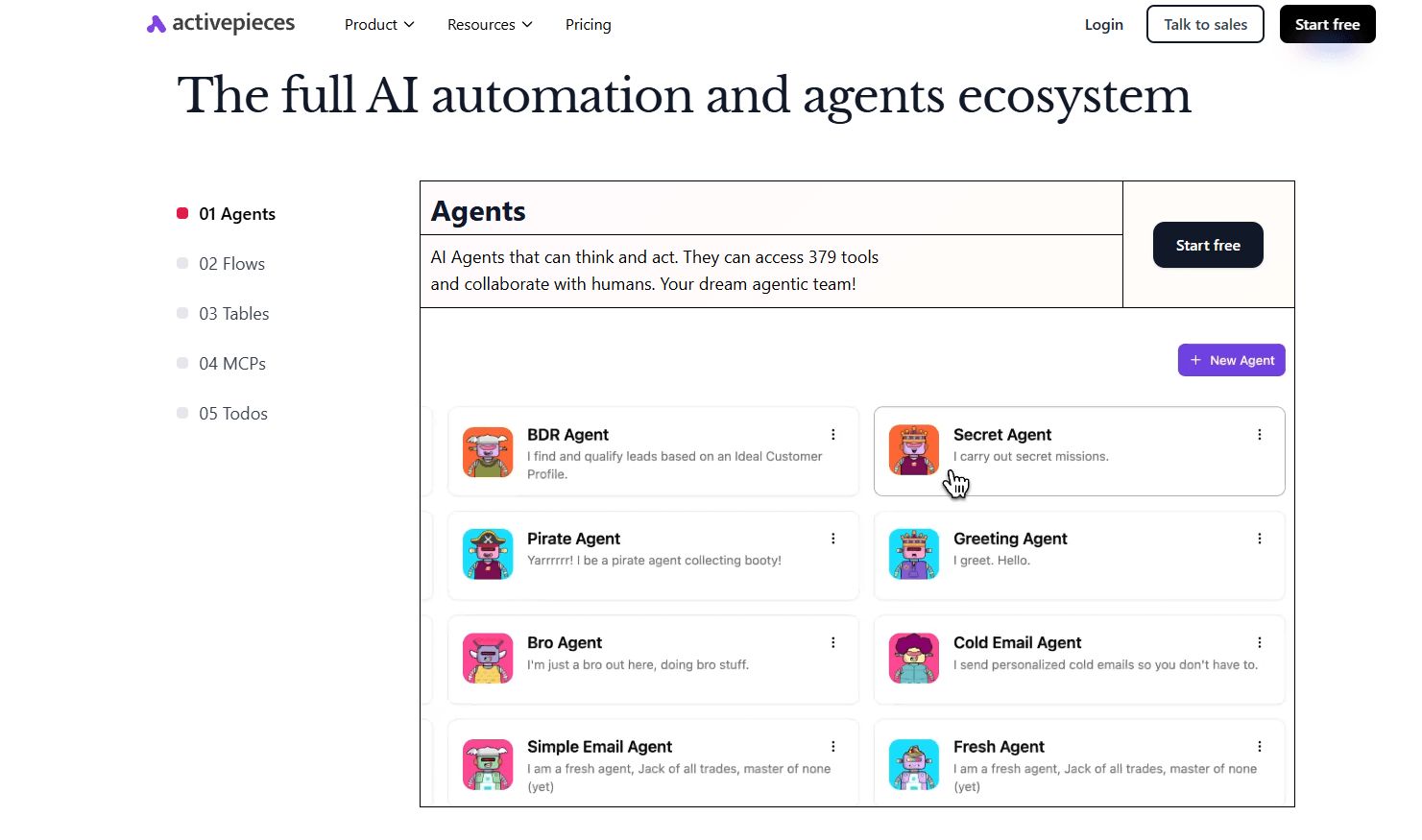
Activepieces combines AI agents with 379+ integrations to help teams move beyond basic triggers and actions. These agents follow a “Perceive, Think, Act” loop: collect data, reason through it, and take action across apps.
More than half of its integrations, or pieces, come from the community, which means new connections are added faster than competitors. IT teams and developers can extend functionality with TypeScript, while non-technical users build flows in a no-code editor that’s simple to learn.
Enterprises choose Activepieces since you can run it in the cloud for speed or self-host for control and security. Human-in-the-loop approvals, chat and form triggers, and support for AI-driven steps make it excellent for an organization’s workflow management.
FAQs About AI Workflow Automation
What is AI workflow automation?
AI workflow automation uses artificial intelligence to reduce manual work, connect software applications, and make processes faster. It analyzes past data, pulls from multiple data sources, and delivers actionable insights that help you understand context and make better decisions.
With careful planning, companies address employee concerns about automation while building systems that stay up to date and support sustainable growth.
What is the best AI workflow automation tool?
The best AI workflow automation tool today is Activepieces, since it combines no-code ease with developer control, integrates widely, and gives both teams and sales professionals the ability to run workflows.
What are the workflow ideas for AI automation?
Workflow ideas include automating lead scoring, email routing, expense tracking, customer support replies, and document review. These flows help teams save time, improve accuracy, and focus on more valuable tasks.
How to learn AI workflow automation?
You can learn AI workflow automation by starting with free online tutorials, exploring no-code builders, and experimenting with small workflows inside platforms like Activepieces. Gradually, you can expand into advanced use cases, connect more apps, and apply AI models to solve complex problems.


